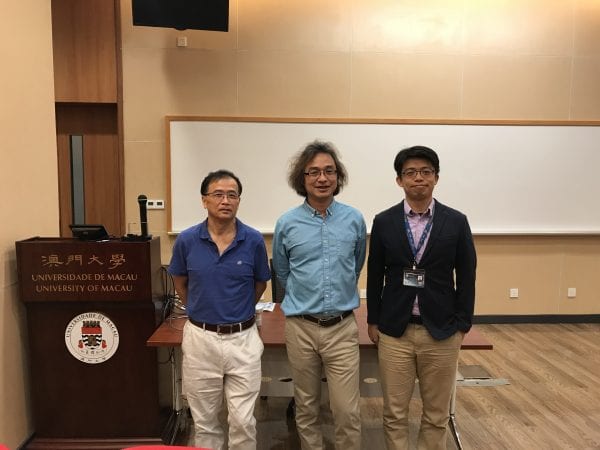
| Talk title | The roles of gut microbiota, innate myeloid cells, and host genetic in determining the age-related HBV clearance in mice |
| Speaker | Prof. Hurng-Yi WANG Professor National Taiwan University |
| Date & Time | 20 November 2018 (Tue) 10:00am-11:00am |
| Venue | Room G004, E12 Building (University of Macau) |
| Abstract | A unique feature of hepatitis B virus (HBV) infection in humans is that viral clearance heavily depends on the age of exposure. However, the reason for this remains unclear. To understand the mechanism(s) of age-dependent outcomes of HBV infection in humans, we established an age-related HBV mouse model in which six-week-old (N6W) C3H/HeN exhibited virus tolerance, while 12-week-old (N12W) counterparts represented virus clearance. Similar phenomena were also observed between three- (B3C) and six-week-old (B6C) BALB/c, but not seen in C57BL/6, indicating that host genetic is important in determining the outcomes of HBV transfection. By investigating the hepatic myeloid cell dynamics in N6W and N12W mice, we found that N12W had a significantly higher number of TNF-α-secreting Ly6C+ monocytes and fewer IL-10-secreting liver residential macrophages at D3 in the liver than their younger N6W counterparts after HBV transfection. In addition, the elevated number of IFNγ+TNFα+CD8+ T cells at D7 was only seen in the older cohort. Sterilization of gut microbiota using antibiotics from 6 to 12 wk or 3 to 6 wk of age, respectively, prevented N12W or B6C mice from rapidly clearing HBV. Compared to control mice, antibiotic treated B6C showed significantly less Ly6C+ monocytes at D3 and CD8+ T cells at D7 in the liver, suggesting that gut microbiota may shape liver immune responses and contribute to dynamics of hepatic monocytes. Furthermore, Ly6C+ monocytes and residential macrophages, respectively, represent the resistance and tolerance arms of host defenses. These two cell types orchestrate liver immune responses to determine HBV clearance/tolerance. |

